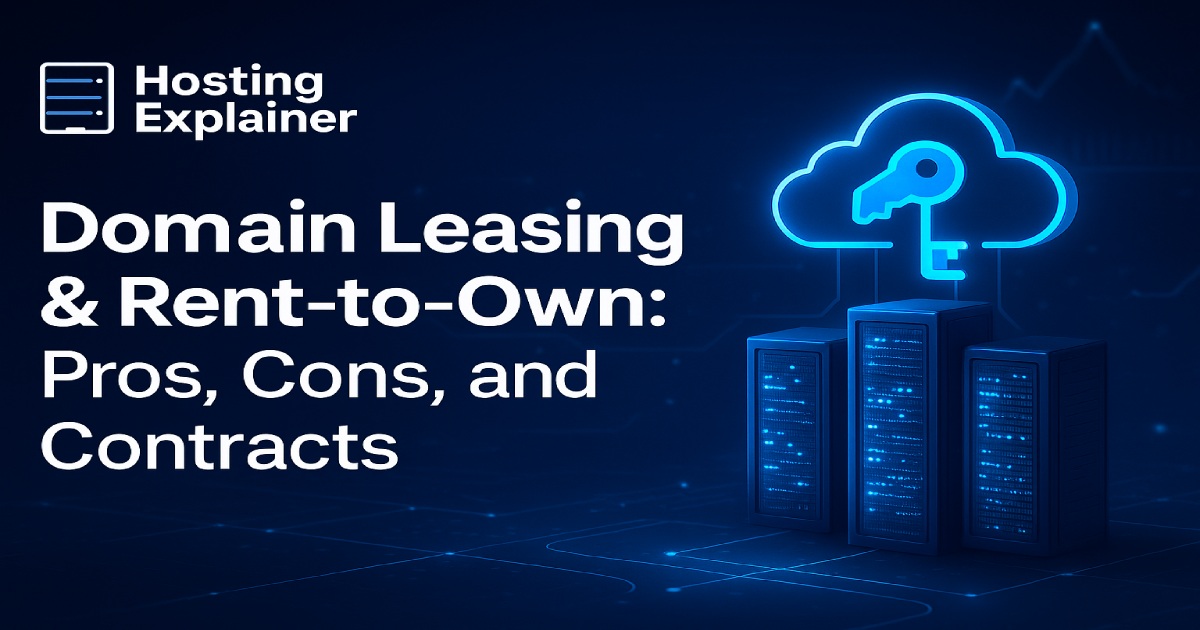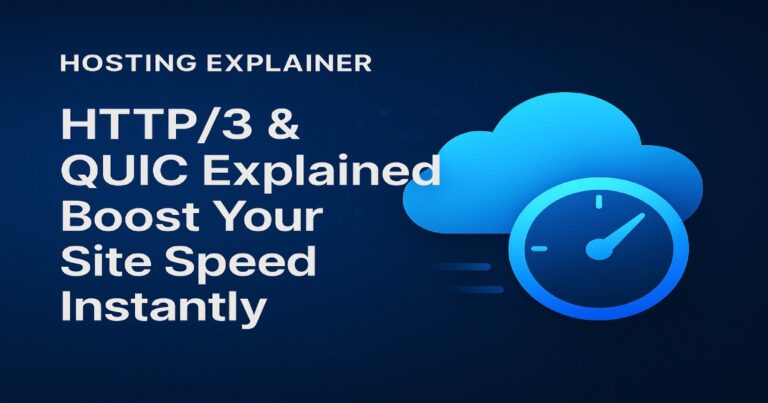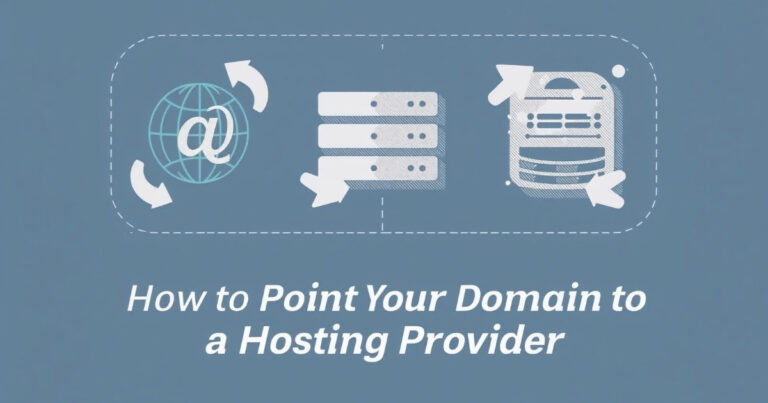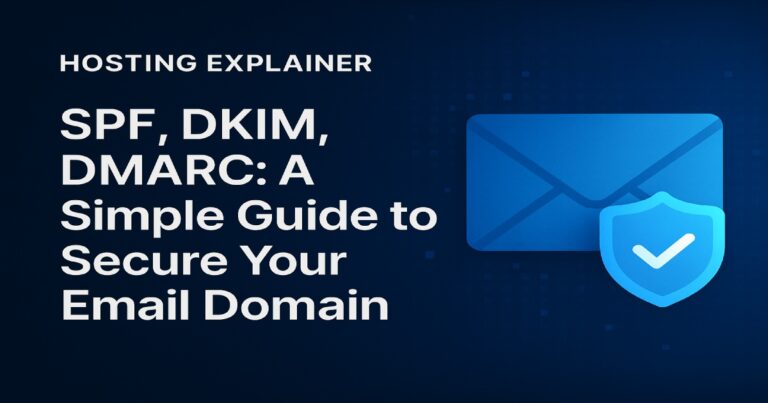Domain Leasing & Rent-to-Own: Pros, Cons, and Contracts in 2025
Finding the right domain name can feel like finding gold. But buying one outright isn’t always easy, especially if it’s a premium name that costs thousands. That’s where domain leasing and rent-to-own options come in.
These models make it possible to secure a great domain without paying the full price upfront. I’ve used both approaches for client projects and personal ventures, and they can be game-changers when managed correctly.
In this guide, I’ll explain how they work, their pros and cons, what to include in a domain leasing contract, and how to protect your investment.

What Is Domain Leasing, and How Does It Work?
Domain leasing means renting a domain name for a specific time, just like renting an office space. You get full usage rights but not ownership, unless your contract allows a later purchase.
The process is simple:
- The domain owner and tenant agree on terms.
- You pay a fixed monthly or annual fee.
- You can use the domain as long as payments continue.
Platforms like DAN.com, GoDaddy, and Escrow.com make this process secure with built-in domain leasing agreements and escrow services.
Leasing gives startups and small businesses access to premium domains without heavy upfront costs. It’s flexible, scalable, and a practical way to test branding ideas before fully committing.
Understanding Rent-to-Own Domains: A Smarter Way to Secure Premium Names
A rent-to-own domain takes leasing one step further. Here, your monthly payments go toward ownership. Once you’ve completed all payments, the domain becomes yours.
This setup is popular for entrepreneurs who want long-term ownership but can’t pay the full price at once. For example, one of my clients leased a $5,000 domain through a rent-to-own deal. After paying $200 monthly for two years, they owned it outright.
This model also benefits sellers — they earn steady income while still having the option to reclaim the domain if the buyer defaults. It’s a win-win for both sides when handled with a clear domain leasing contract.
Domain Leasing vs. Rent-to-Own: Key Differences Explained
If you’re unsure whether to lease or go rent-to-own, you’re not alone. Both options help you secure great domains without full upfront payment, but they work differently. Let’s break down the key differences.
| Aspect | Domain Leasing | Rent-to-Own |
|---|---|---|
| Ownership | Remains with the owner | Transfers after full payment |
| Payment | Rental fee only | Payment builds equity |
| Flexibility | Easier to cancel | Long-term commitment |
| Best For | Short-term projects | Long-term brand strategy |
| Risk | Lose access after lease | Lose payments if contract ends early |
Both models have their place. If you’re testing a new idea or temporary campaign, leasing works best. If you’re sure about your brand’s long-term direction, rent-to-own domains offer better value.
The Pros of Leasing or Renting-to-Own a Domain
There’s a reason more startups are choosing to lease or rent-to-own premium domains.
- Lower Upfront Costs: You can secure a strong domain without breaking the bank. This allows businesses to focus funds on growth instead of one-time purchases.
- Access to Premium Domains: You can compete with bigger brands by leasing short, memorable names that would otherwise be too expensive.
- Flexibility & Test Options: Leasing lets you test traffic, SEO performance, and audience response before buying.
- Negotiable Contracts: Terms like payment schedules and renewal options can be adjusted based on your needs.
- Secure Transactions: Using trusted domain brokers or escrow services ensures safe, transparent deals.
These advantages make domain leasing ideal for entrepreneurs, digital marketers, and investors building online portfolios.
The Cons and Risks of Domain Leasing
While domain leasing is flexible, it’s not risk-free.
- No Ownership Until Full Payment: You don’t legally own the domain until you’ve paid in full (for rent-to-own) or purchased it outright.
- Missed Payments Can End Contracts: If you miss payments, you could lose the domain and any branding linked to it.
- Renewal and Legal Issues: Contracts can get tricky, especially if renewal terms aren’t clear. Always review the domain leasing agreement before signing.
- Potential Seller Disputes: If the owner sells or breaches terms, you could lose access. Use Escrow.com or GoDaddy Lease Service to prevent this.
How to Create or Review a Domain Leasing Agreement
A good domain leasing contract protects both the buyer and seller. Here’s what every solid agreement should include:
- Parties & Ownership Details: State who owns and who leases the domain.
- Payment Terms: Specify frequency, method, and total amount.
- Usage Rights: Clarify what the lessee can and can’t do with the domain.
- Renewal & Buyout Clauses: Mention how and when ownership can transfer.
- Default Conditions: Define what happens if payments are missed.
- Dispute Resolution: Identify jurisdiction or mediation process.
Always use a domain escrow service to hold funds securely until all terms are met.
When Domain Leasing Makes Sense
From my experience, leasing a domain is perfect when:
- You’re testing a new business or campaign.
- You need a premium domain to build early trust.
- You want flexibility before committing to ownership.
For example, one tech startup I advised leased a $3,000 domain for $75/month during its beta phase. When user traction proved strong, they switched to rent-to-own.
The model gave them freedom to grow before fully investing. It’s a strategy that lets you scale smartly without overspending early.
Best Platforms and Services for Domain Leasing in 2025
Choosing the right platform can make or break your domain leasing experience. The best services don’t just offer flexible payments. They ensure security, transparency, and smooth ownership transfer.
Here are some trusted options worth considering in 2025.
| Platform | Best For | Key Features |
| DAN.com | Rent-to-own deals | Easy contract automation |
| GoDaddy | Domain leasing & escrow | Wide domain network |
| Escrow.com | Secure transfers | Legal contract protection |
| Afternic | Domain resellers | Fast domain listing |
| Efty | Investors & portfolio owners | Customizable sales pages |
Before committing, always review each platform’s service fees, lease terms, and transfer policies. A few extra minutes of research can save you from unexpected costs and ensure a safe, stress-free domain leasing process.
Expert Tips for Negotiating a Domain Lease or Rent-to-Own Deal
Negotiation can save you money and stress. Here’s what I’ve learned:
- Know the Domain’s Value—Use appraisal tools or brokers to estimate fair pricing.
- Ask for Buyout Options—Always include a clause that lets you buy the domain later.
- Use Escrow Protection—Never pay directly to a seller you don’t know.
- Document Everything—Keep written records of terms and communications.
- Avoid Emotional Decisions—If the price feels too high, walk away.
Good negotiation balances value and safety—and builds long-term trust between both parties.
FAQs—Domain Leasing & Rent-to-Own
1. Can you lease a premium domain name?
Yes. Many marketplaces let you lease high-value domains monthly or yearly.
2. What happens when my lease term ends?
You can renew, buy, or let it expire depending on your domain leasing contract.
3. Who owns the domain during a lease?
Ownership stays with the lessor until full payment (for rent-to-own) or transfer agreement.
4. Is rent-to-own a good option for small businesses?
Absolutely. It spreads cost over time and builds brand equity.
5. How do I transfer ownership after completing payments?
The owner releases the domain through a secure domain ownership transfer using an escrow or registrar service.
Making the Right Choice Between Leasing and Owning
Whether you lease or rent-to-own a domain depends on your goals. If you need short-term access or want to test branding, domain leasing offers flexibility. But if you plan to build a long-term digital brand, rent-to-own provides ownership security.
From my professional experience, the best path is to start with leasing, evaluate your results, and switch to rent-to-own when your project gains traction.
Always remember your domain name isn’t just a web address. It’s your brand’s digital foundation. Protect it, plan for it, and make smart choices when signing a domain leasing agreement.
Leasing or renting-to-own a domain can open doors that would otherwise stay closed. Giving you access, control, and credibility in one affordable step.






